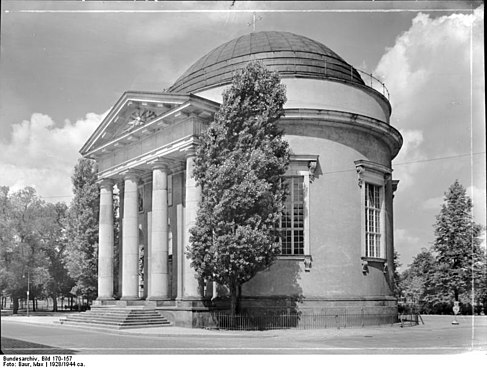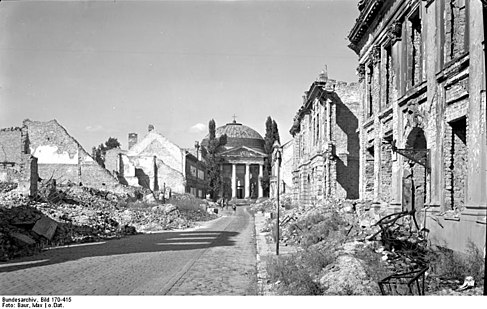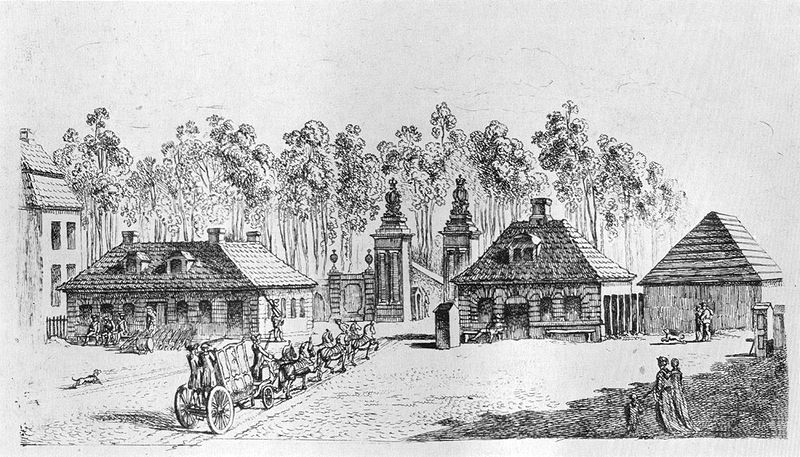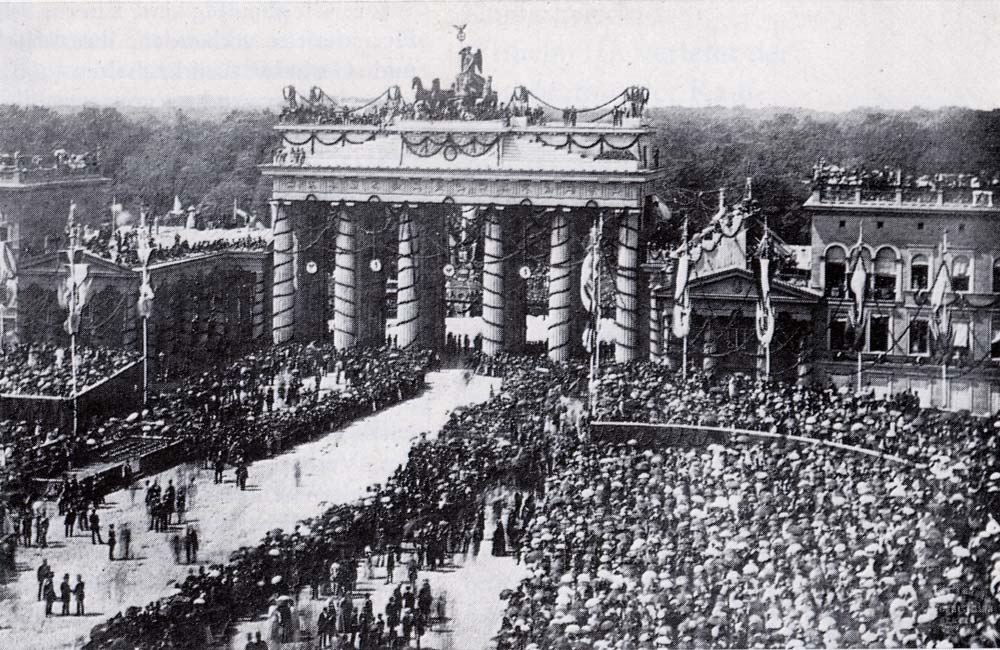And today I uploaded two more models, this time in Potsdam, core city of Brandenburg-Prussia, and its succesor state, the Kingdom of Prussia.
First, the Jägertor.
First, the Jägertor.
Built in 1733, the Jägertor ("Hunter's Tor") was part of the city wall that protected Potsdam by the 18th century. It was located at the northern section of the wall, where now a promenade is on its place. The section connected the Jägertor with the Nauener Tor to the East, and the (small) Brandenburg Gate to the West.


A scupture is placed at the top of the gate, showing three dogs hunting a deer as part of the typical hunting season scene.
And now, let's go with the Französische Kirche.

The French Church of Potsdam was built between 1752 and 1753 as a result of the Edict of Potsdam from about 70 years earlier. The religious freedom that the Kingdom offered to foreigners attracted a number of French Huguenots, expelled from their land. The Church was one of the last works by Wenzeslaus von Knobelsdorff, built by order of Frederick the Great and based in the Pantheon in Rome.

Despite several renovations and changes, the church was lucky enough to escape WWII untouched, as you can see above. Currently the Französische Kirche is the oldest church in Potsdam (the Garrison Church, built between 1730 and 1735, was demolished by the Communist regime in 1968).




